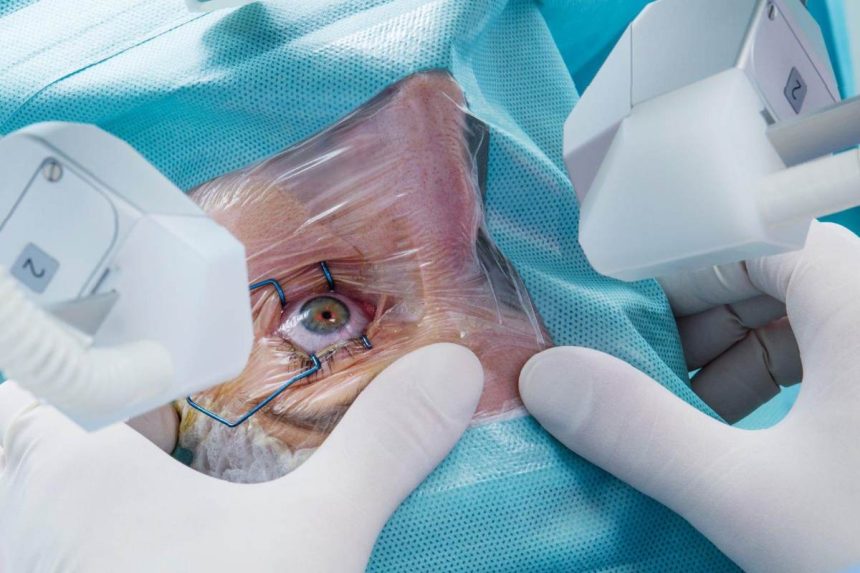Modern Cataract surgery is a common procedure to restore vision that has been impaired by cataracts. If you live in Rochester Hills or the surrounding areas and are considering cataract surgery, this comprehensive guide will provide you with the information you need to understand the process, benefits, and advancements in modern cataract surgery.
Table of Contents
Introduction to Cataract Surgery Rochester Hills
Cataract Surgery Rochester Hills cataract surgery has become a well-established and frequently performed operation with high success rates. When the natural lens of the eye becomes cloudy, a condition known as a cataract, it can severely affect vision, making everyday activities difficult. Cataract surgery involves the removal of this cloudy lens and the placement of an artificial lens, known as an intraocular lens (IOL), to restore clear vision.
What Are Cataracts?
Cataracts are a common eye condition where the natural lens becomes opaque over time. This can cause blurred vision, difficulty with glare, and a decrease in color intensity. Cataracts typically develop slowly and can affect one or both eyes. The most common cause is aging, but they can also result from injury, genetic factors, or other eye conditions.
Signs You May Need Cataract Surgery
If you are experiencing any of the following symptoms, you might need cataract surgery:
- Clouded, blurred, or dim vision
- Increasing difficulty with vision at night
- Sensitivity to light and glare
- Seeing “halos” around lights
- Frequent changes in eyeglass or contact lens prescription
- Fading or yellowing of colors
- Double vision in a single eye
Preparing for Cataract Surgery
Before undergoing cataract surgery in Rochester Hills, you will have a pre-surgical consultation. During this visit, your eye doctor will perform a comprehensive eye exam to evaluate the cataract’s impact on your vision and the health of your eyes. Measurements of your eye will also be taken to determine the proper power of the IOL.
The Day of Your Cataract Surgery
On the day of the surgery, the procedure itself is usually quick, often taking less than an hour. It is typically done on an outpatient basis, meaning you can go home the same day. You will need someone to drive you home after the procedure.
The Cataract Surgery Procedure
Modern cataract surgery is generally performed using a technique called phacoemulsification. Here’s what happens during the procedure:
- Anesthesia: Your eye will be numbed with either topical eye drops or an injection around the eye.
- Corneal Incision: The surgeon makes a small incision in the cornea of the eye.
- Phacoemulsification: A small ultrasonic probe is inserted into the eye through the incision. This device uses ultrasound waves to break up the cloudy lens into tiny pieces, which are then gently suctioned out.
- Intraocular Lens (IOL) Implantation: A folded IOL is inserted through the incision. Once in place, the IOL unfolds and takes over the refractive power of the natural lens.
- Closure: Typically, the incision is self-sealing and does not require stitches.
After the Surgery Recovery and Results
After cataract surgery, you may experience mild discomfort, itching, or light sensitivity. These symptoms usually improve within a few days. Your vision may be blurry at first as your eye heals and adjusts. Most people can resume normal activities within a few days but may need to wait several weeks before doing any strenuous activity.
Follow-up and Aftercare
You will have a series of follow-up appointments to check on your eye’s healing process. It’s crucial to attend these appointments and follow your doctor’s advice on medication and activity levels.
Risks and Complications
Like any surgery, cataract surgery has risks, though serious complications are rare. Potential complications include infection, bleeding, inflammation, swelling, retinal detachment, or issues with the IOL.
The Advancements in Modern Cataract Surgery
Modern cataract surgery in Rochester Hills has seen significant advancements in both technique and technology. These advancements have made the surgery safer, with better outcomes:
- Laser-Assisted Cataract Surgery: This technology offers a high level of precision in lens removal and IOL placement.
- Advanced IOLs: New types of IOLs, such as multifocal and accommodating lenses, can improve both near and distant vision, sometimes eliminating the need for glasses.
Choosing the Right Surgeon in Rochester Hills
When considering cataract surgery, choosing an experienced and reputable surgeon in Rochester Hills is vital. Look for a surgeon who is board-certified and has a track record of successful outcomes.
Conclusion
Cataract surgery in Rochester Hills offers a safe and effective way to restore vision. With modern advancements and skilled surgeons available, patients can look forward to a straightforward procedure with life-changing benefits. If you believe you may need cataract surgery, consult with an eye care professional to discuss your options. Remember that each individual case is unique, and the best way to ensure a successful outcome is to work closely with your eye care provider throughout the process, from the initial consultation to post-surgery follow-up. For individuals living in Rochester Hills and dealing with cataracts, modern cataract surgery presents a promising opportunity to regain clear vision and improve quality of life. With advanced technology and experienced surgeons, the prospects for those undergoing the procedure are brighter than ever.






